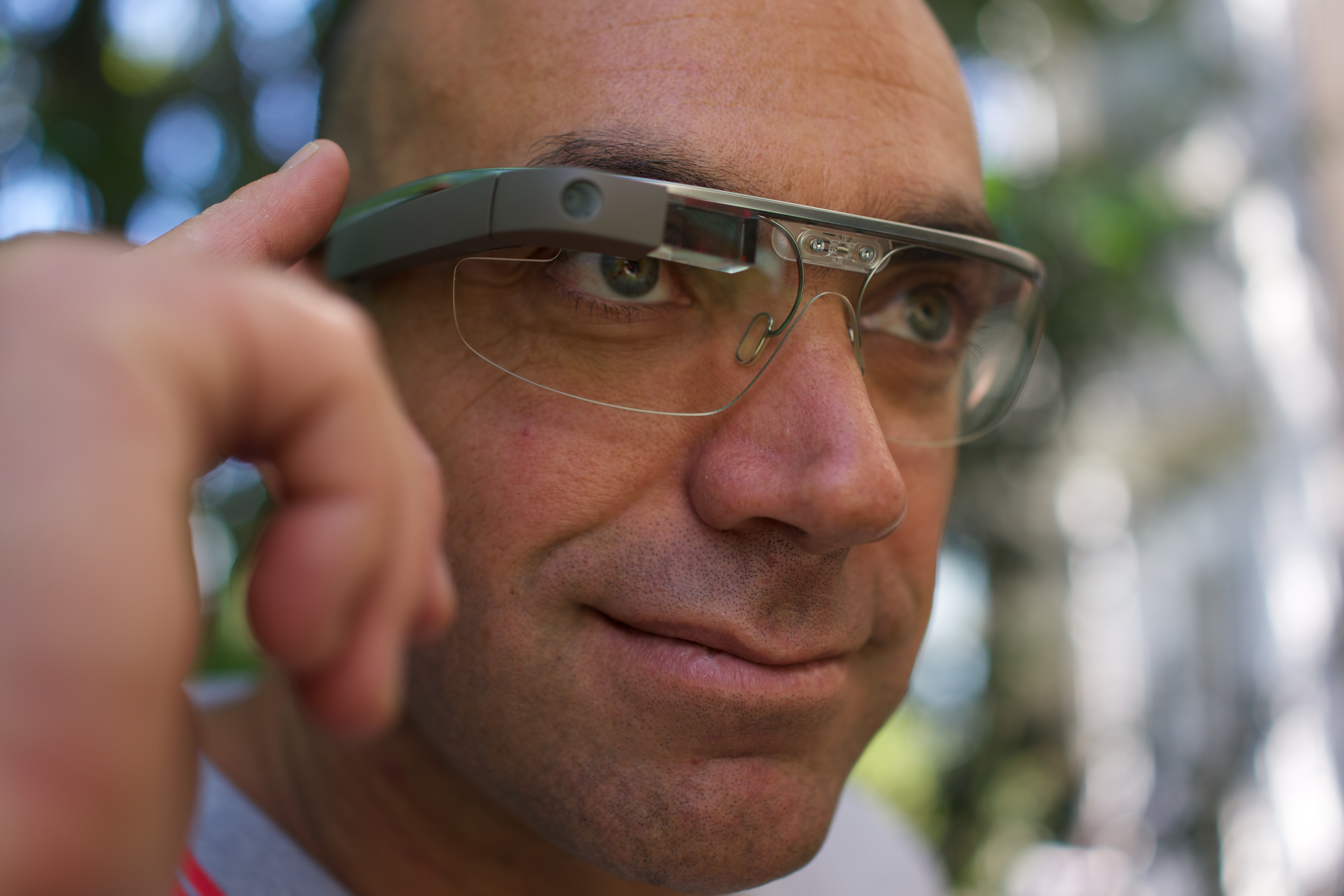
Optical head-mounted display
An optical head-mounted display (OHMD) is a wearable device that has the capability of reflecting projected images as well as allowing the user to see through it. In some cases, this may qualify as augmented reality (AR) technology. OHMD technology has existed since 1997 in various forms, but despite a number of attempts from industry, has yet to have had major commercial success.
Various techniques have existed for see-through HMDs. Most of these techniques can be summarized into two main families: "Curved Mirror" (or Curved Combiner) based and "Waveguide" or "Light-guide" based. The curved mirror technique has been used by Vuzix in their Star 1200 product, by Olympus, and by Laster Technologies. Various waveguide techniques have existed for some time. These techniques include diffraction optics, holographic optics, polarized optics, and reflective optics:
Head-mounted displays are not designed to be workstations, and traditional input devices such as keyboards do not support the concept of smart glasses. Input devices that lend themselves to mobility and/or hands-free use are good candidates, for example:
Market structure[edit]
Analytics company IHS has estimated that the shipments of smart glasses may rise from just 50,000 units in 2012 to as high as 6.6 million units in 2016.[10] According to a survey of more than 4,600 U.S. adults conducted by Forrester Research, around 12 percent of respondents are willing to wear Google Glass or other similar device if it offers a service that piques their interest.[11] Business Insider's BI Intelligence expects an annual sales of 21 million Google Glass units by 2018.[12]
According to reliable reports, Samsung and Microsoft are expected to develop their own version of Google Glass within six months with a price range of $200 to $500. Samsung has reportedly bought lenses from Lumus, a company based in Israel. Another source says Microsoft is negotiating with Vuzix.[13]
In 2006, Apple filed patent for its own HMD device.[14]
In July 2013, APX Labs founder and CEO Brian Ballard stated that he knows of 25-30 hardware companies who are working on their own versions of smart glasses, some of which APX is working with.[15]